Best gravel groupsets: the best choices for following the road after the pavement ends
The best drivetrain options for racing, bikepacking, or just exploring wherever the road, or trail, might lead
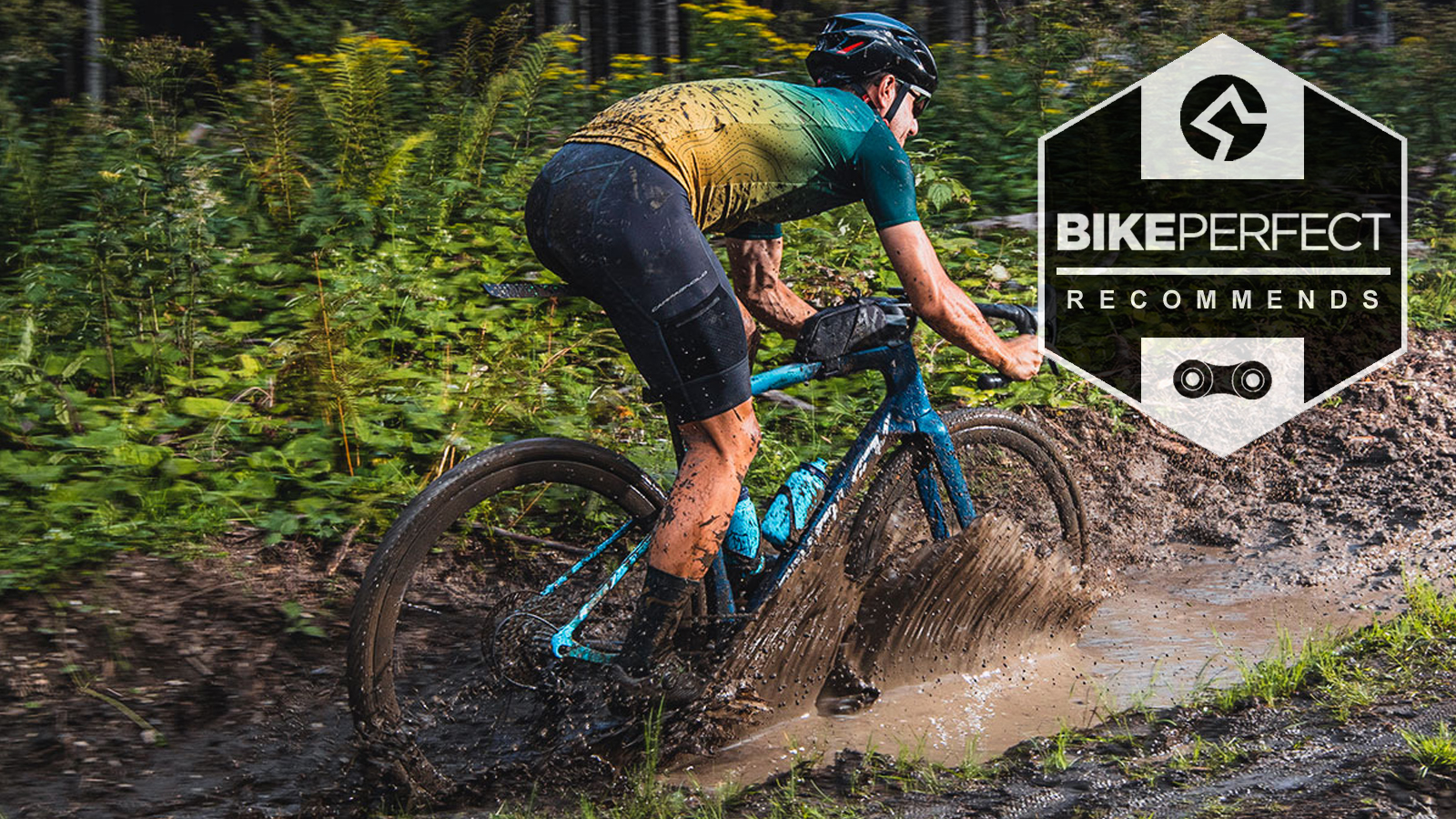
Gravel bikes are the most versatile types of bikes available. You can start the ride in the city and when the road ends, just keep going. That's the power of a the best gravel bikes and their ability to handle whatever the ride might bring. Underpinning that power is the groupset on your bike.
The groupset covers the gears and brakes that handle your interaction with the frame. That includes the shift and brake levers, the front and rear brake calipers, front and rear derailleurs, crankset, bottom bracket, chain and cassette. It's the way you interact with the bike and it affects the character of your ride from the moment you get on until the moment you get off.
On a gravel bike there is even more variation than a road or mountain bike. Depending on their purpose, some gravel bikes use a double chainring upfront while others use a single. The rear gearing then ranges anywhere from 10 gears all the way up to 13.
With so many choices, we've put together a list of the options we think are the best. You might be shopping for a new bike and looking to understand the build options, or it might be time to update an older frame. Whatever your need, keep reading to see details about a wide range of options. Or, if you want to know how to choose the best gravel bike groupset for you, then jump to the bottom.
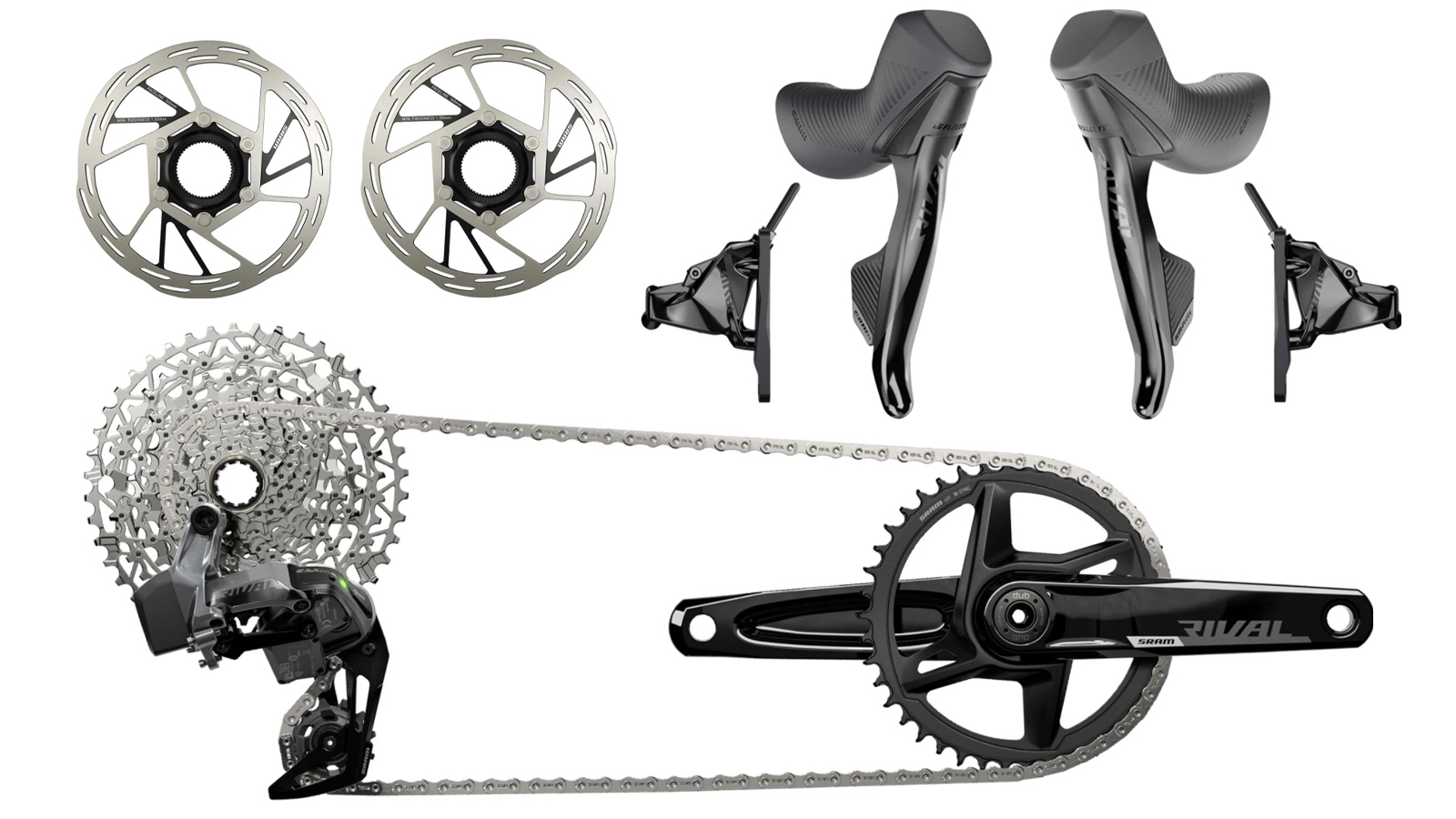
SRAM Rival XPLR eTap AXS
Specifications
Reasons to buy
Reasons to avoid
Since 12-speed AXS systems hit the market, there's been demand for a mechanical option. So far SRAM has resisted but with the release of the Rival 1x12 groupset they may have made it irrelevant. Pricing is so good for a complete electronic drivetrain that it makes less sense than ever to stick with mechanical. SRAM also helps with any issues of range anxiety by giving the option of bringing extra batteries. Although a charged-up system will last for a very long time it's not a big expense to have an extra battery on hand for the truly adventurous rides.

SRAM Force AXS Wide
Specifications
Reasons to buy
Reasons to avoid
If you prefer to keep a front derailleur then Force AXS Wide is the best choice for a SRAM 12-speed option. The heart of this system is a 10-36 cassette that, when paired with a 43/30 front crank, gives tons of range if needed but reduces front chainring shifts. As with all AXS components one of the great things that comes with a true wireless design is compatibility. There is no concern for cable pull and you can use whatever pieces you want to. If you later decide you want to shift to a mountain bike cassette in the rear you can swap the rear derailleur and use the same drop bar controls.
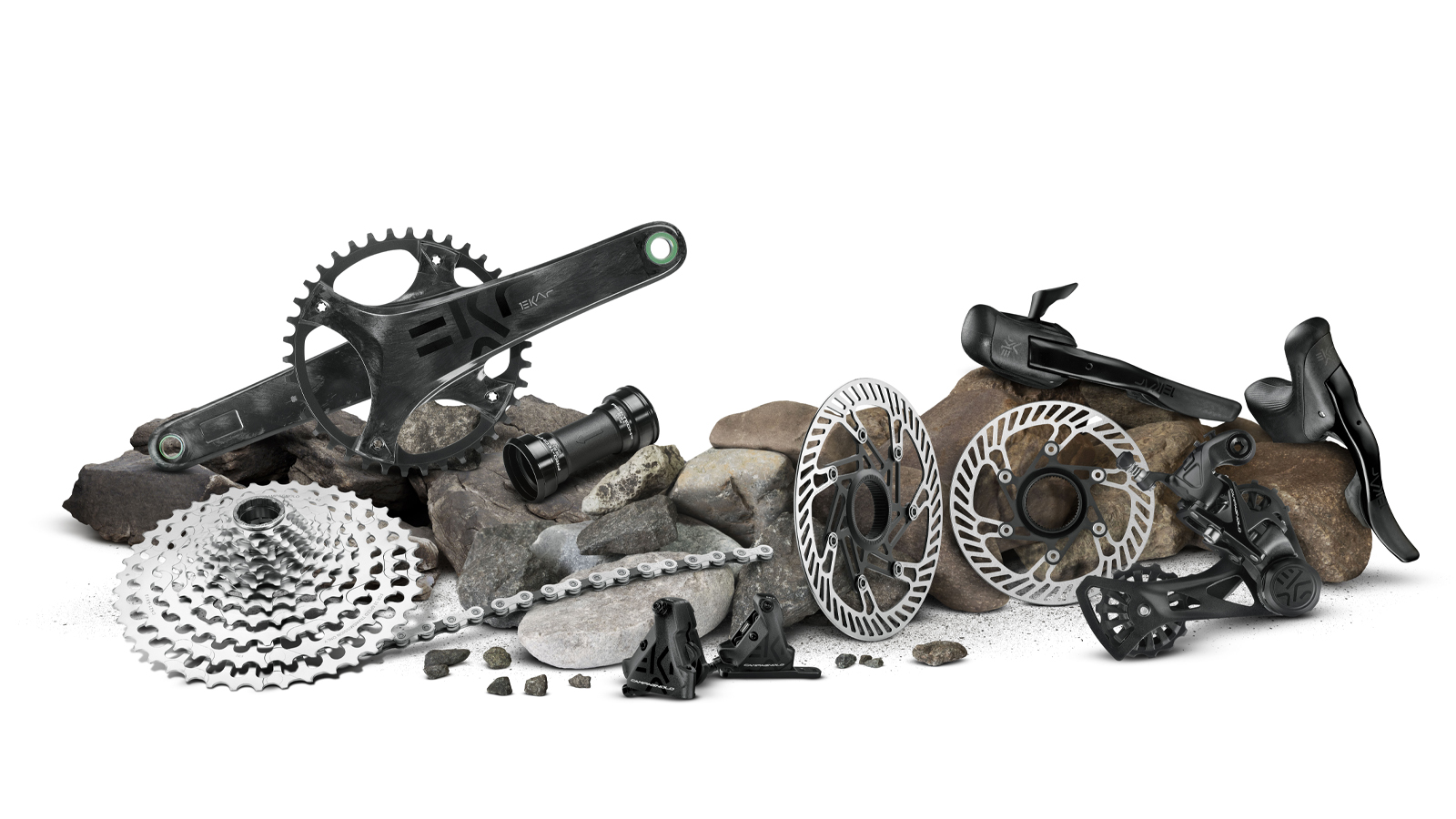
Campagnolo Ekar
Specifications
Reasons to buy
Reasons to avoid
If you like the idea of sticking to a 1x system for your gravel riding Campagnolo offers an option that combats any large jumps in gearing. Ekar uses a 13-speed rear cassette but as is typical for Campagnolo they do not significantly expand the range. The widest range offered would be a 38-tooth front cassette paired with a 10-44 in the back and that's not ground-breaking. Instead, the 13 gears focus on keeping your cadence right where you want it, making Ekar a perfect choice if you want to race but stick to only one derailleur.
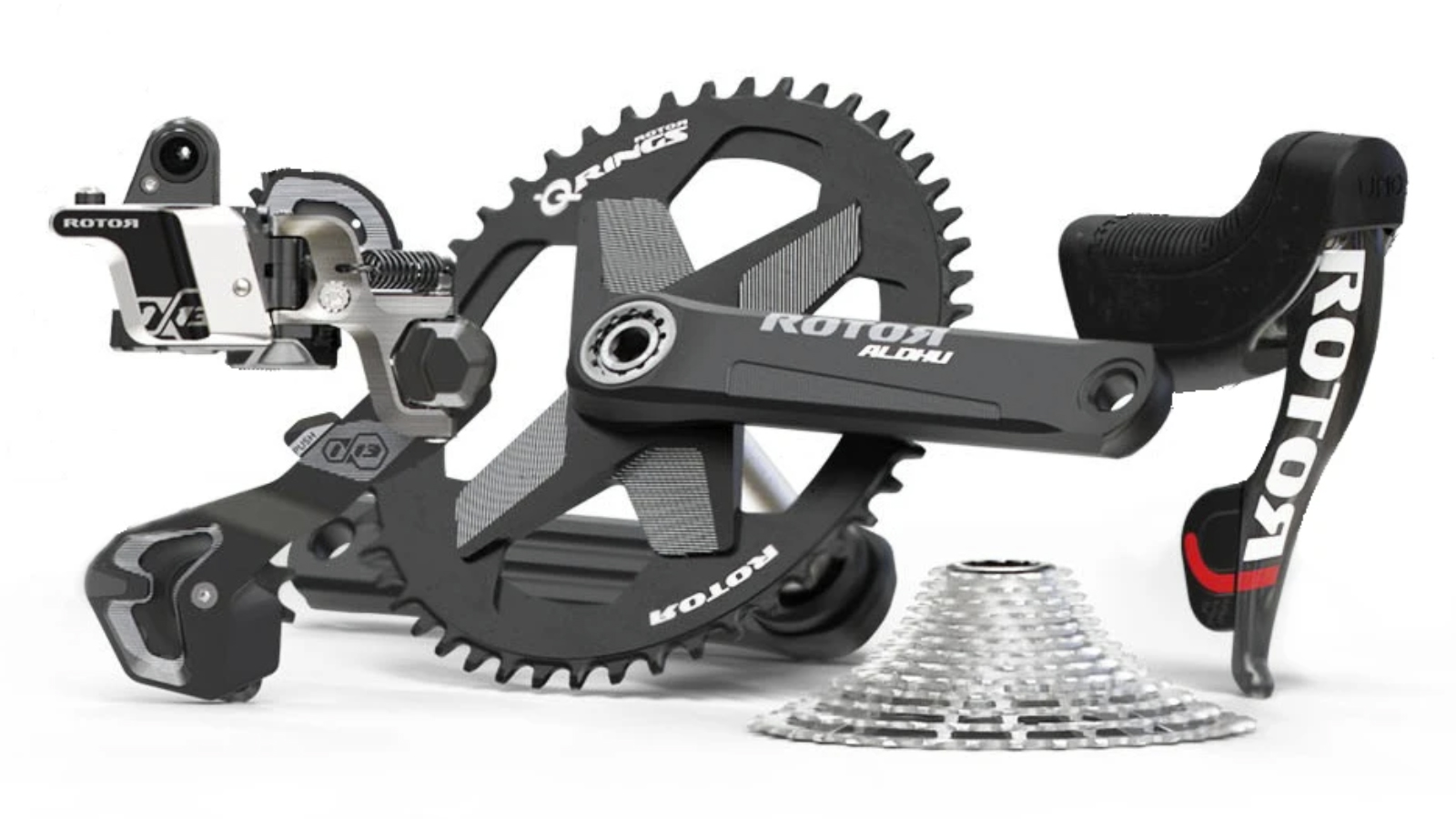
Rotor Hydraulic Groupset
Specifications
Reasons to buy
Reasons to avoid
Rotor is not a big player when it comes to groupsets. Most people know the small Spanish brand for its oval chainrings. It does offer a unique take on a groupset though and it's the lightest option available by a good distance. It's a 1x system with indexing at the rear derailleur, instead of the controls, that's powered with hydraulic fluid. It's certainly not electronic shifting but it's also not the mechanical you expect. Along with the unique design comes options for incredible range with a 38-tooth chainring and as much as a 10-52 in the rear. There will be jumps with a range like that but the 13 gears will help mitigate them.
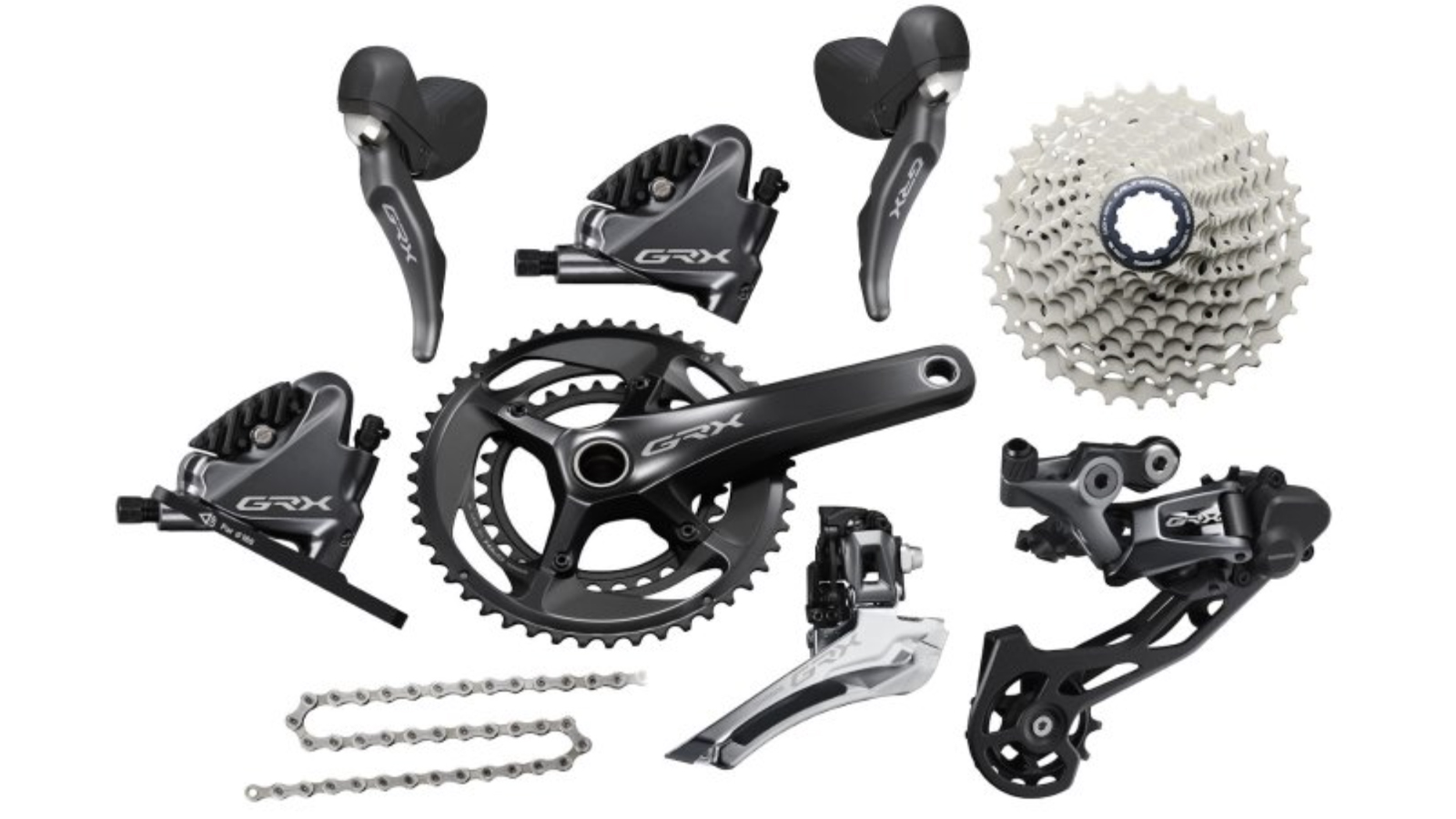
Shimano GRX RX800 Series
Specifications
Reasons to buy
Reasons to avoid
When it comes to choosing a gravel groupset there are advantages that come with staying clear of anything exotic. Lots of rear cogs and fancy shifting choices are amazing to use until you have a problem. If you are in a place without much support, be that during a ride or just where you live, then it can be a real hassle. Shimano was the first to offer a gravel groupset, and 2x11 mechanical shifting is a well-trodden path at this point. You are unlikely to ever have an issue finding someone to work on it and parts are easier to source when you need them.
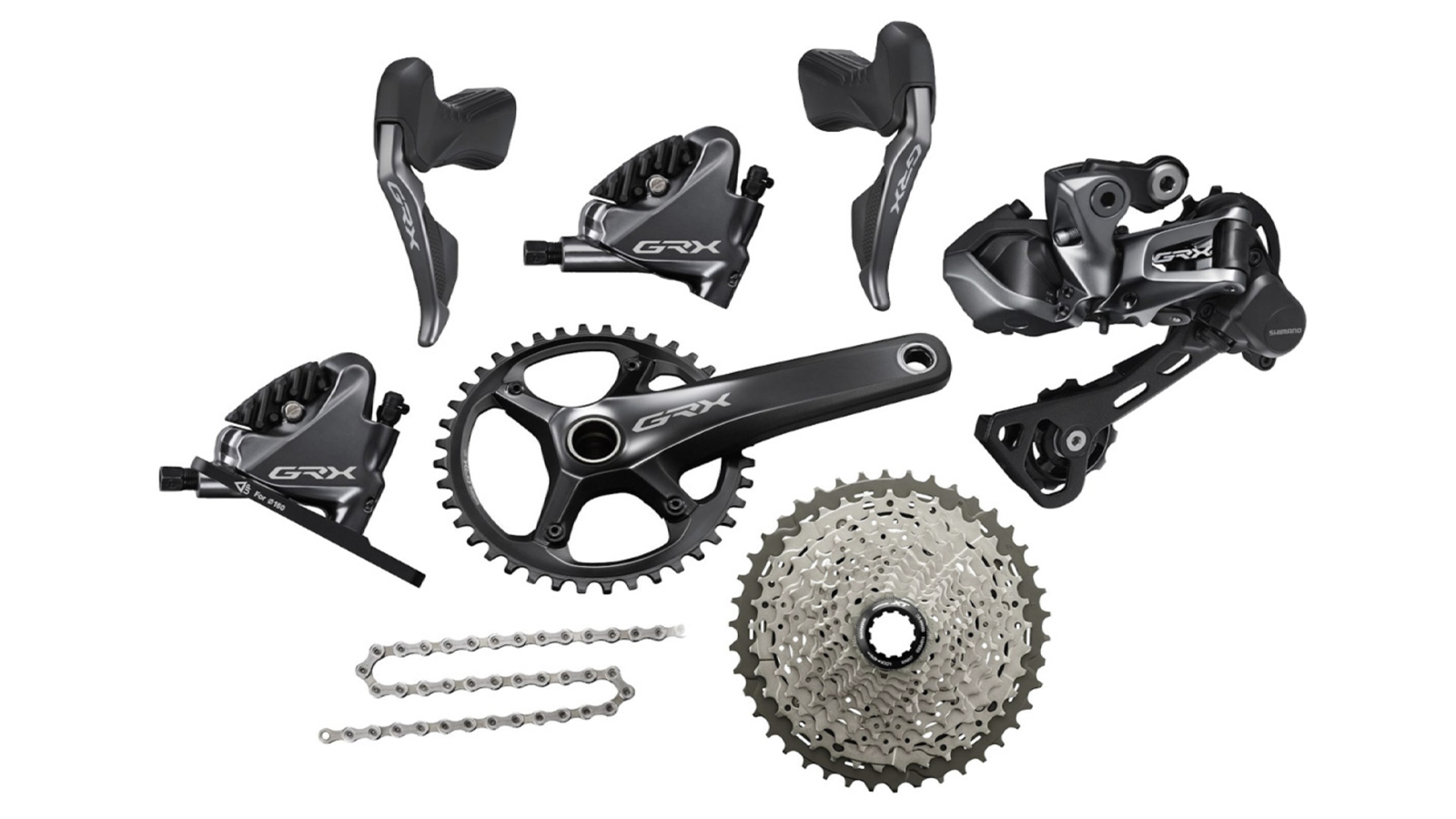
Shimano GRX Di2
Specifications
Reasons to buy
Reasons to avoid
The GRX 800 series and the GRX Di2 series are basically the same groupset. You choose if you want mechanical or electronic shifting and 1x or 2x chainring options. They get their own listing here to call out the two distinct choices that make sense for the best gravel groupset. If you want to stick with Shimano 11-speed for all the ease of staying mainstream but instead of mechanical 2x choose 1x electronic then this is your choice. The Shimano take on electronics does mean a wired installation and a larger battery that isn't easy to remove from a bike.
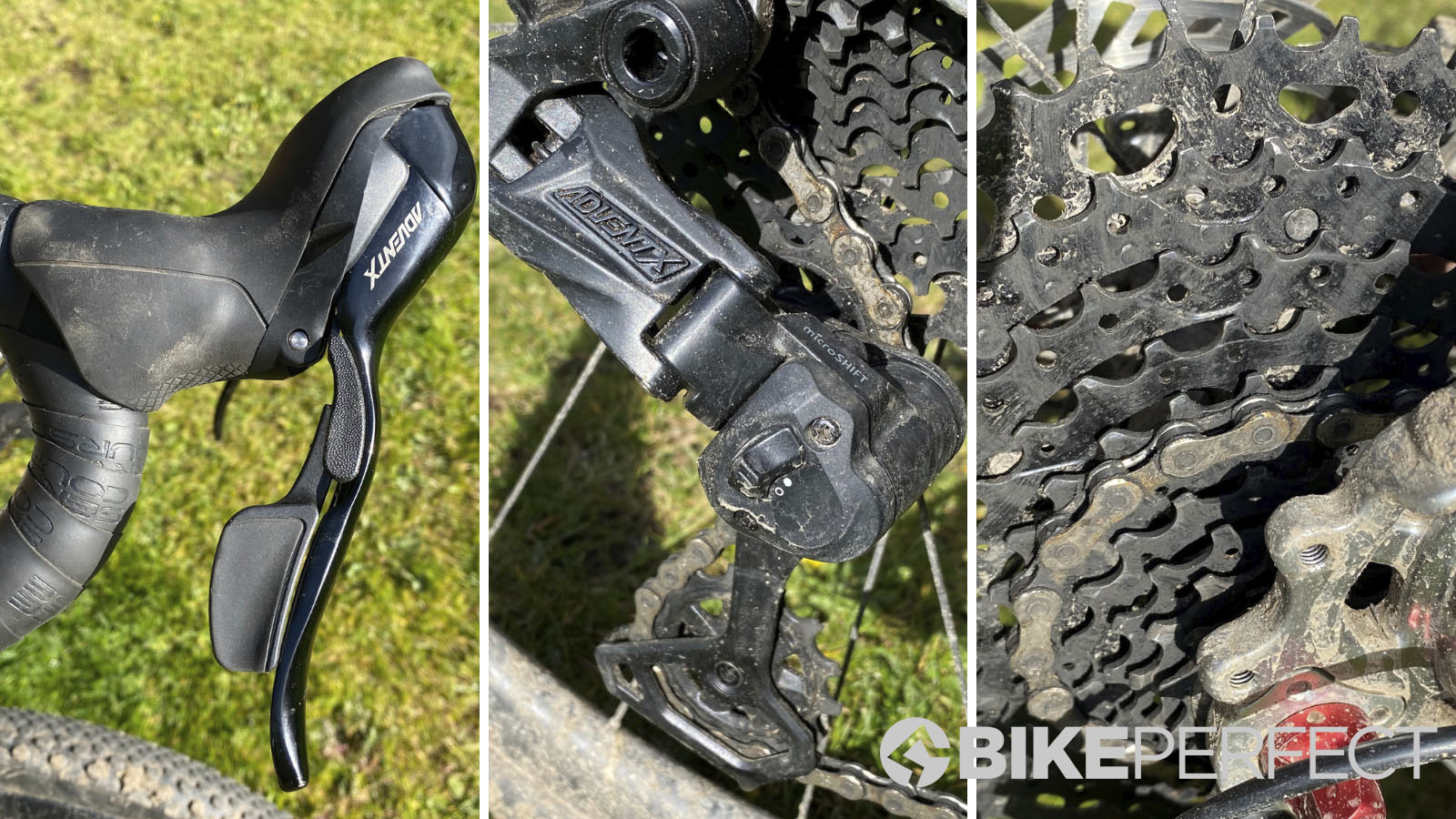
Specifications
Reasons to buy
Reasons to avoid
Microshift is a company that's been around for a long time and makes top quality, budget priced, options that are compatible with SRAM and Shimano parts. That compatibility is important given that Advent X gets you only a partial groupset. You'll need to bring a chain and front chainring to the table to complete the parts needed to get out riding. Keep that in mind when comparing prices and weights but even if you add a Shimano GRX600-1 crankset and 10 speed chain you will remain well below a complete groupset from the competition. Also, they do offer flat bar shifting options so Advent X might make a perfect update to an older bike.
Check out our Microshift Advent X review for more detail.
How to choose the best gravel groupsets for you
1x or 2x?
When you see/hear the term 1x or 2x it's referring to the number of gears at the front of the bike. There is either one chain ring on the front crank or two. Keep in mind, that doesn't mean anything for the rear so it's only part of the equation. You'll need to look for the rear gearing as well to get the full picture.
Gravel bike gearing, as with most things, straddles the line between road bikes and mountain bikes. That means while modern mountain bikes are primarily 1x, and road bikes are 2x, there is a mix when it comes to gravel bikes. One is not better than the other, it just depends on the bike's focus. Some gravel bikes are more of a road bike with extra tyre clearance. Others are very close to a mountain bike. Depending on what you want to use the bike for sometimes 1x will make sense and sometimes 2x is the better choice.
With modern gravel gearing covering a huge range no matter if it's 1x or 2x, the choice comes down to the distance between the gears. Riding fast with other people, either racing or just in groups, it's nice to have shorter steps between gears. When you are on the edge of your performance envelope every detail counts and keeping your cadence right where you want it makes things a little more manageable. 2x gearing keeps the jumps between gears short and that helps cadence.
The contrast is when you find yourself managing technical off-road climbs. In those situations, you've got a lot going on and your concentration is already stretched to the limit. The last thing you want to have to manage is which front chainring you've selected as you start to climb. With 1x gearing you are free to go up and down the rear cassette with no consideration other than finding the right gear. It's a bit of simplicity when you need it.
Hydraulic or mechanical disc brakes?
Hydraulic brakes operate like a car. The lines use a fluid to transmit your input at the lever to the caliper. A light touch is all it takes to bring your bike to a stop. Technically speaking the limit to how fast a bike can stop is the grip between the tyres and the ground surface. That means hydraulic brakes don't stop faster but they do make it a whole lot easier plus they are much easier to modulate.
Mechanical disc brakes operate with a cable that travels between the lever and the caliper. As you pull the lever the force of your pull is directly responsible for stopping the bike. Pull harder if you want more braking power. It's a system that works just fine to bring your bike to a stop but is generally harder to live with.
While at the limit stopping power is technically the same mechanical brakes have other downsides. The biggest issue is that mechanical brake systems need to have the distance between the pads and the rotor manually adjusted as the brakes wear. They tend to not remain perfectly adjusted for very long and so need a lot of adjustment. They also struggle with modulation close to the limit. You want to apply as much brake pressure as possible without locking up the wheel. That's tough with a mechanical system.
There are hybrid systems that might be of interest to those updating an older bike. These systems keep the hydraulics completely contained in the caliper while a cable still connects to the lever. If you are looking at a new groupset this probably isn't on your radar but there are those that are passionate about them.
Flat mount or post mount brakes?
This is a frame compatibility question. Older frames will need a post mount brake while newer frames will have moved to flat mount. If you are looking at a new bike this isn't going to come up but it might for those retrofitting a new groupset. Keep in mind that there are adapters available.
If you have a post mount frame and are buying a new groupset it makes sense to get flat mount brakes. For one thing it's difficult to find post mount calipers at this point. Even if you solve that challenge though, flat mount is the modern standard. There are adapters to get a flat mount caliper to work on a post mount frame and if you upgrade the frame in the future it will be flat mount.
Mechanical or electronic shifting?
Mechanical shifting is the way most people expect a bike to work. Move the shift lever and it pulls a cable that changes the gear. It works just fine but it's undeniably the inferior choice given modern options.
Electronic shifting sends a signal to the derailleur and a motor changes the gear for you. It's superior in almost every metric you can think of. The cables never need to be replaced and never break. Adjustment is easier and even works quite well while riding. When you can't feel your fingers, you can still shift without issues. The batteries last for months and in some cases, you can bring extras. The only downside is the price.
The whole groupset will cost more if you choose to go electronic but individual components are the bigger concern. Gravel bikes spend time off-road tackling challenging conditions. A broken rear derailleur isn't unheard of and you are looking at a repair bill that's double the price if you have electronic shifting. For rough and tumble gravel bikes you might consider staying with mechanical shifting only so you don't have to worry about breaking something.
Why is gravel gearing easier?
When the going gets tough on the road you might just stand and put your weight behind every turn of the crank. On a gravel bike though, that's rarely an option. With slick unpaved road surfaces, you need to keep your weight balanced over the rear tire. Expect to be doing a lot more seated climbing even if you tend to stand on your road bike.
There's also the need to carry more gear. This one is definitely less universal but depending on the riding you plan to tackle you may find yourself far from any help. Even if you aren't spending the night, you often have to carry more water, more food, and more emergency supplies when on your gravel bike. All the extra gear means a heavier bike and that, again, means the need for easier gearing.
Josh Ross was our US tech writer. He's most happy when talking about the finer details of how bicycle parts and components work, and enjoys putting his thoughts to words. He is a road cyclist at heart but can often be found taking the gravel road less traveled. Although he rarely races these days, he still enjoys a good Zwift session and race but will always choose the real world over pixels. Height: 5'9" Weight: 137 lb.

